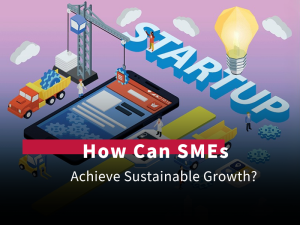Carbon Border Adjustment Mechanism (CBAM) is a groundbreaking climate-policy tool that directly ties international trade to carbon emissions. Launched by the European Union as part of the European Green Deal, CBAM ensures imported goods bear the same carbon costs as those produced within the EU.
By levying fees on carbon-intensive imports, CBAM creates a “fair playing field”: if a foreign product’s manufacturing emits more CO2 than an equivalent EU-made product, an extra carbon charge is applied. This not only prevents companies from evading strict EU emissions rules by shifting production abroad (closing the carbon leakage loophole), but also drives global emissions reductions. In essence, CBAM aligns trade with sustainable development goals – balancing economic growth with climate responsibility. The EU expects this mechanism to help achieve its ambitious target of cutting greenhouse gas emissions 55% by 2030 (from 1990 levels), advancing both climate action and fair competition.
CBAM Implementation Timeline and Scope
CBAM is being rolled out in phases, giving businesses time to adjust to the new requirements. It began with a transition phase (2023–2025) focused on transparency. Starting October 1, 2023, importers in the EU must report quarterly the embedded greenhouse gas emissions of certain imported products, but during this phase they do not yet pay carbon fees. The first reports, covering Q4 2023, were due by January 31, 2024. This reporting-only period raises awareness and helps both regulators and companies gather reliable emissions data.
From January 1, 2026, CBAM moves into its operational phase. Importers of covered goods into the EU will be required to purchase CBAM certificates to account for the CO2 emitted in producing those goods. The price of these certificates will mirror the EU’s carbon market (EU ETS) pricing, ensuring importers pay the equivalent carbon cost that European producers face. Initially, CBAM applies to imports in sectors with high carbon footprints: steel and iron, cement, aluminum, fertilizers, electricity, and hydrogen – industries that together account for ~94% of EU industrial emissions. By making foreign suppliers of these goods pay for their carbon output, the EU incentivizes cleaner production methods around the world.
Figure: CBAM Implementation Timeline (2023–2034) – The EU’s phased approach starts with emissions reporting (2023–25), introduces carbon certificate payments in 2026, and gradually increases fees as free emission allowances for EU industries are phased out by 2034. This ensures a smooth transition to full CBAM enforcement.

Throughout 2026–2033, the carbon fees ramp up while the EU simultaneously phases out free carbon allowances for its domestic industries. Each year, the share of emissions requiring paid certificates will grow (as free quotas shrink), until 2034 when CBAM is fully implemented. From 2034 onward, importers must cover 100% of their products’ emissions with CBAM certificates, with no free allocations – effectively a complete integration of carbon costs into all imported goods under CBAM’s scope. By that point, the mechanism may also expand to additional products and sectors beyond the initial list (the European Commission will review and potentially broaden the scope after 2025). Companies worldwide should anticipate that more industries – and more of their supply chain – could be subject to carbon-border charges as global climate policies tighten.
Global Trade Impacts and the U.S. Perspective
CBAM represents a paradigm shift in global trade, and its ripple effects are already being felt. Exporters to the EU are under pressure to reduce the carbon intensity of their products or face financial penalties at the border. For example, early signals show CBAM’s potential impact: in one case, Europe’s stricter carbon costs contributed to a 30% drop in aluminum exports from China to the EU. Such changes highlight how carbon-intensive producers may lose market share if they don’t clean up their processes. By attaching a price to carbon pollution, CBAM rewards cleaner production and penalizes high emissions, effectively nudging international supply chains toward sustainability.
American businesses, in particular, are taking note. The United States exports billions of dollars of goods to Europe annually, from industrial materials to high-tech products. If those products carry a higher carbon footprint than European equivalents, U.S. exporters will need to pay the CBAM fees – raising their costs and potentially affecting competitiveness. In fact, when the EU first detailed its CBAM plans in 2021, it was seen as “threatening U.S. export sales and jobs” unless American companies and regulators responded with comparable climate measures. In other words, CBAM could disadvantage exporters from countries (like the U.S.) that lack a national carbon price or similarly stringent climate policies.
To address this, U.S. policymakers are exploring America’s own version of a border carbon adjustment. In 2025, U.S. lawmakers introduced the Foreign Pollution Fee Act, a proposal to place fees on imported goods based on their greenhouse gas emissions. As Senator Lindsey Graham put it, “the polluters of the world…pay a price for their policies,” with the aim of “reward[ing] American businesses who are doing the right thing.”
This bill, and similar bipartisan proposals in recent years, reflect a recognition that the carbon cost embedded in products will likely become a standard part of trade. Major U.S. trading partners – the EU, UK, Canada, and others – are moving ahead with carbon border adjustments, and the U.S. is signaling it doesn’t want to be left behind. Even if the U.S. has yet to implement its own CBAM-style policy, American companies exporting to Europe will need to comply with the EU’s rules. That means measuring product-level emissions and potentially paying carbon fees unless they can show their goods were made with lower emissions or have already paid a carbon price at home.

For U.S. businesses, especially those in carbon-intensive sectors like steel, cement, aluminum, fertilizers, and electricity, CBAM poses both a challenge and an opportunity. Those that proactively cut emissions and invest in clean technology could gain a competitive edge in a carbon-constrained global market. On the flip side, firms that ignore the writing on the wall risk losing access to valuable markets. The direction is clear: integrating sustainability is becoming a prerequisite for international trade.
CBAM and the Role of Technology Businesses
At first glance, one might assume CBAM only matters to heavy industries like metals or chemicals. In reality, technology businesses are deeply entwined in this shift toward sustainable development. The tech sector both relies on complex global supply chains and serves as a leader in corporate climate initiatives. Many technology companies source hardware, components, or manufacturing services from around the world – meaning the materials (steel, aluminum, plastics, electricity) that go into servers, data centers, devices, and gadgets could fall under CBAM’s scope as the policy expands.
For instance, if a U.S. electronics firm exports network equipment or cloud infrastructure hardware to Europe, the steel and aluminum inside could attract a CBAM fee if those materials were produced with high emissions. Tech manufacturers will therefore need to ensure their suppliers (often in countries with varying environmental standards) are adopting greener practices.
The good news is that the tech industry is already at the forefront of carbon emissions reduction efforts. Leading American technology companies have publicly committed to aggressive sustainability goals, which align closely with the intent of CBAM.
Microsoft has pledged to be carbon negative by 2030, meaning it will remove more carbon than it emits, and by 2050 it plans to remove all carbon the company has emitted since its founding. The company has implemented an internal carbon fee since 2012 and is investing in renewable energy and carbon removal technologies. It’s also requiring its suppliers to cut emissions and using its cloud and AI technologies to help track and reduce carbon footprints.
Apple likewise has a far-reaching plan: by 2030, every Apple device sold will have net zero climate impact, as Apple will be 100% carbon neutral across its entire business, supply chain, and product life cycle. Apple has already achieved carbon neutrality for its own operations and is now pushing over 300 global suppliers to power their Apple production with 100% clean energy by 2030. In other words, Apple is actively decarbonizing its supply chain, from materials sourcing to manufacturing, which directly reduces the future CBAM exposure of its products.
Meanwhile, Intel – a major semiconductor manufacturer – has committed to reach net-zero greenhouse gas emissions in its global operations by 2040, and set ambitious 2030 milestones along the way. Importantly, Intel is working with its partners and suppliers to cut supply-chain emissions at least 30% by 2030, recognizing that the carbon footprint of its chips includes not just Intel’s factories but also the vendors providing materials and equipment.
These examples show that U.S. tech companies are treating carbon reduction and transparency as core business objectives, not just PR talking points. By investing in renewable energy, energy-efficient design, carbon accounting, and circular economy initiatives, tech firms are future-proofing themselves for regulations like CBAM. In fact, many are voicing support for climate policies: Microsoft, Apple, and other tech giants often advocate for stronger climate action, and their CEOs frequently highlight sustainability as integral to innovation.

As Apple’s CEO Tim Cook noted, “Climate action can be the foundation for a new era of innovative potential, job creation, and durable economic growth.” For technology businesses, aligning with CBAM isn’t just about avoiding fees – it’s about driving the next wave of tech innovation (from green data centers to low-carbon materials) and meeting customer expectations for eco-friendly products. A reputation for sustainable practices can enhance brand value and open up new market opportunities, particularly as more corporate and government procurement decisions factor in carbon footprints. In short, tech companies that embed sustainable development into their strategy will find themselves well-positioned in a CBAM-shaped world.
CBAM Adaptation Strategies for Businesses
Every business that operates in international markets – whether in technology or traditional manufacturing – should develop a plan to navigate CBAM and similar carbon regulations. Adapting to these changes is not only crucial for compliance, but it also offers a pathway to long-term competitiveness in a low-carbon economy. Here are key CBAM adaptation strategies and best practices for companies:
- Stay Informed and Proactive: Ensure your organization understands what CBAM is and how it evolves. Assign a team or hire experts to monitor climate-related trade policies in the EU and other regions. Being caught off-guard by new rules can be costly. Proactive companies are already educating their leadership and supply chain partners about CBAM’s requirements. By staying ahead of regulatory changes, you can turn compliance into a strategic advantage rather than a last-minute scramble.
- Measure Your Carbon Footprint (Data is Key): It’s often said “you can’t manage what you don’t measure.” Begin by conducting a thorough GHG inventory of your operations and products. This means calculating direct emissions (from your factories, power use, company vehicles, etc.) and indirect emissions (from purchased electricity and from your supply chain – also known as Scope 3 emissions). Adopting widely accepted standards like the Greenhouse Gas Protocol or ISO 14064 can help ensure accuracy and credibility. Under CBAM, importers must report the “embedded emissions” of their goods, so exporters should be ready to provide this data. Invest in tools and software (many tech companies offer cloud-based carbon tracking solutions) to collect and manage emissions data across your value chain. Reliable data not only keeps you compliant with CBAM reporting, it also helps identify where to prioritize emission reduction efforts.
- Reduce Emissions Through Innovation: Use the insights from your carbon footprint analysis to implement carbon reduction measures. This could involve upgrading to energy-efficient equipment, electrifying vehicle fleets, improving insulation and processes to use less energy, and minimizing waste. Critically, consider a switch to renewable energy sources for your operations – solar, wind, or purchasing green electricity – to cut down Scope 2 emissions. Many firms are investing in on-site solar panels or entering power purchase agreements for clean energy. Additionally, explore new technologies that can lower emissions in production. For example, in heavy industry, this might mean using green hydrogen or electric arc furnaces; in the tech sector, it could mean designing chips and data centers for maximum energy efficiency. Every ton of CO2 you eliminate from your processes is a ton you won’t have to “pay for” at the EU border. Beyond compliance, these innovations often yield cost savings (through energy efficiency) and improved operational resilience.
- Build a Green Supply Chain: Your environmental impact isn’t just within your own walls – it extends to your suppliers and logistics. Engage your supply chain to drive sustainability upstream. This can include selecting suppliers that use low-carbon processes or materials, and collaborating with existing suppliers to help them adopt cleaner technologies. Some companies are providing training or co-investment to help key suppliers install renewable energy or optimize resource use. Others, like Apple and Intel, set clear expectations and targets for supplier emissions reduction. By greening your supply chain, you reduce the embedded carbon in your products, directly mitigating CBAM costs. It also prepares your business for a future where customers and regulators demand transparency into product lifecycle emissions. Don’t forget logistics: optimizing routes, improving fuel efficiency of transportation, or switching to biofuels/electric vehicles for shipping can further cut the carbon footprint of getting your product to market.
- Integrate Carbon Costs into Business Planning: CBAM effectively puts a price on carbon. Smart companies should integrate an internal carbon price in their financial planning and project evaluations. Microsoft, for instance, has charged its business units an internal fee per ton of CO2 for years to fund sustainability efforts. Even if you’re not legally required (yet) to pay for emissions, shadow pricing your carbon (e.g. at EU’s current carbon price of €80–100 per ton) can guide better decisions. It might change how you calculate ROI for a factory upgrade or a supplier choice. If an option results in significantly lower emissions, an internal carbon price will show that it likely pays off in the long run by avoiding external carbon costs. This approach readies you for future regulations and can highlight “no-regret” moves to cut emissions that also make financial sense.
- Ensure Transparency and Compliance: Honesty and accuracy in reporting are paramount. The European Commission has made it clear that fraudulent or evasive reporting under CBAM will be punished. Companies should establish robust processes for Monitoring, Reporting, and Verification (MRV) of emissions – potentially getting third-party audits or certifications for their carbon data. Using standardized reporting frameworks (such as those required by emerging sustainability disclosure regulations) will build trust. Transparency isn’t just about avoiding penalties; it also signals to investors, customers, and partners that your business is well-managed and accountable. In the long run, a reputation for credible ESG (Environmental, Social, Governance) reporting can attract investment and partnerships that value sustainability.
- Leverage Opportunities and Collaborate: Finally, view CBAM and sustainable development not merely as compliance hurdles, but as opportunities for innovation and leadership. Many of the world’s largest companies see climate challenges as a chance to create new solutions – whether it’s developing carbon-efficient products or new services (for example, tech firms offering carbon-tracking software to other industries). Collaboration can amplify results: join industry consortia, public-private partnerships, or cross-sector initiatives focused on reducing emissions. By sharing best practices and perhaps pooling resources in R&D for low-carbon tech, businesses can accelerate the transition and influence emerging standards. There may also be financial incentives available – such as grants, green loans, or tax breaks – for companies investing in sustainability. Tapping into these can offset costs of your green transition. Importantly, communicate your progress. In corporate blogs, sustainability reports, and marketing, highlight how you are cutting emissions and aligning with global climate goals. This not only strengthens your brand with an increasingly eco-conscious public, but also reinforces to regulators (like those administering CBAM) that your firm is a constructive partner in the fight against climate change.

The Carbon Border Adjustment Mechanism underscores a pivotal reality for businesses today: sustainable development and long-term competitiveness go hand in hand. What might initially appear as just another regulatory burden is, in fact, a catalyst driving companies to modernize and innovate. By internalizing the cost of carbon, CBAM nudges businesses to become more efficient, to invest in cleaner processes, and to rethink supply chains from the ground up. Companies that embrace this challenge early – measuring their emissions, adopting green technologies, and fostering a culture of sustainability – will not only avoid paying higher tariffs, but can actually gain a market edge. They’ll be the ones producing the low-carbon products that global customers demand and meeting the standards that more and more governments are adopting.
For U.S. technology companies and beyond, aligning with mechanisms like CBAM is also about leadership. It’s an opportunity to show that American innovation can rise to meet the defining issue of our time: climate change. The private sector’s ingenuity, from Silicon Valley to industrial heartlands, will be crucial in developing the solutions that make carbon-neutral production possible at scale. By adapting to CBAM, businesses signal that they are ready for a future where green business is good business. As Tim Cook’s quote illustrated, sustainability can spur “a new era of innovative potential, job creation, and durable economic growth.” In other words, companies that weave sustainability into their strategy aren’t just doing the right thing for the planet – they’re positioning themselves to thrive in a world where consumers, partners, and investors value responsibility and action.
In conclusion, CBAM and sustainable development objectives are reshaping the global business landscape. From policymakers in Brussels and Washington, to executives in boardrooms, to engineers on factory floors, there’s a growing recognition that economic prosperity must go hand in hand with environmental stewardship. By understanding CBAM’s implications and proactively crafting adaptation strategies, businesses can turn compliance into opportunity. They can reduce risks, uncover efficiencies, and even tap into new markets for green products and technologies. The road to a low-carbon economy is being built one policy and one innovation at a time – and companies that lead on this journey will build trust, resilience, and value for years to come. Embracing CBAM is thus not just about avoiding a new tax; it’s about leading in the next chapter of sustainable, tech-driven growth.





